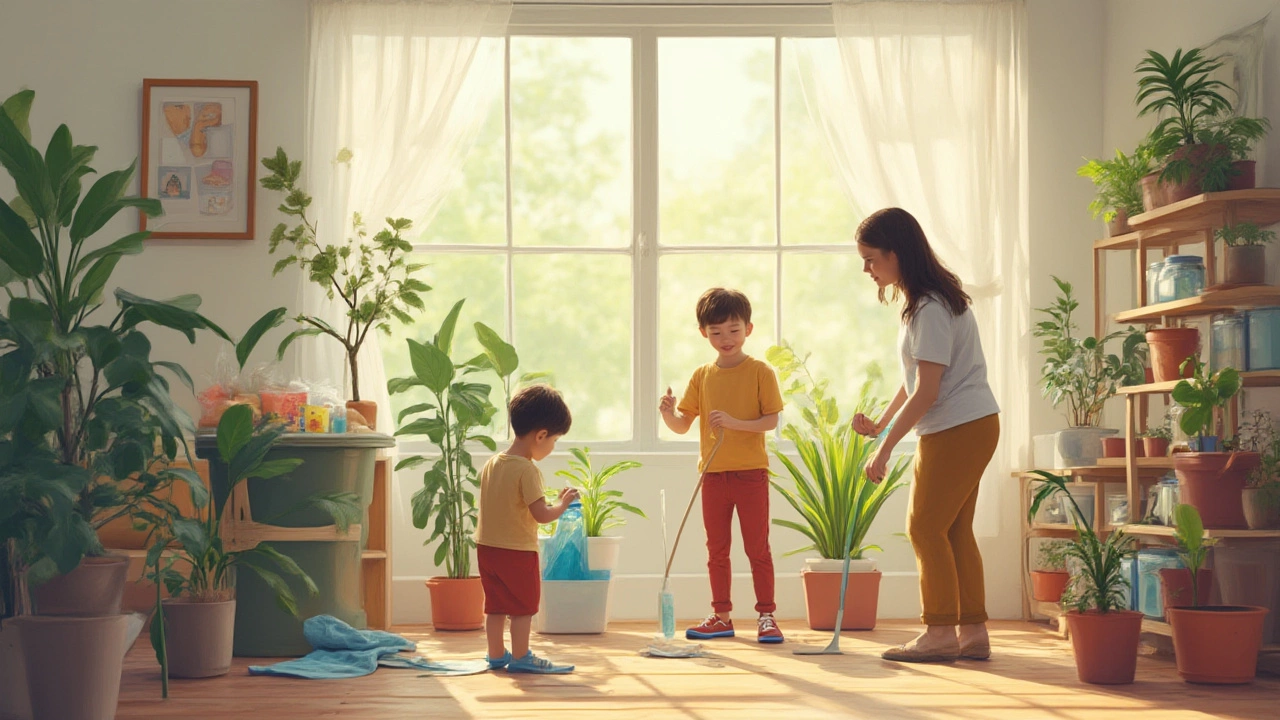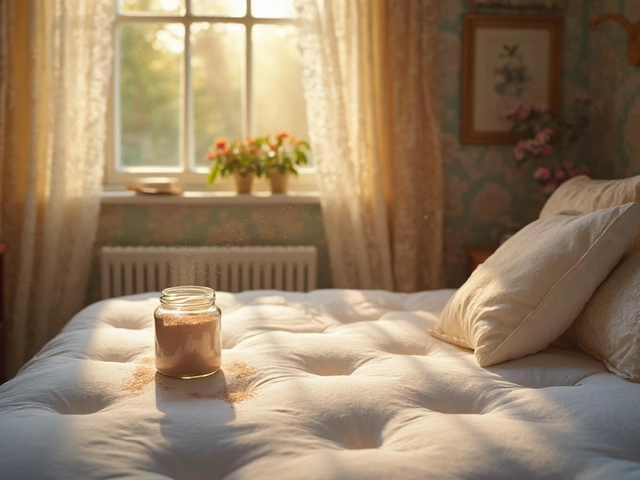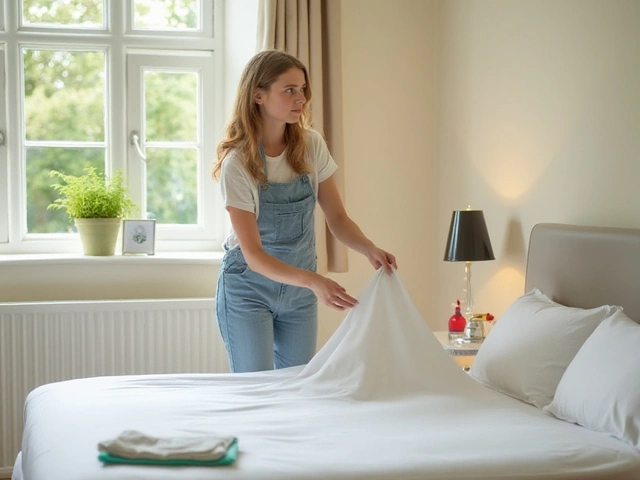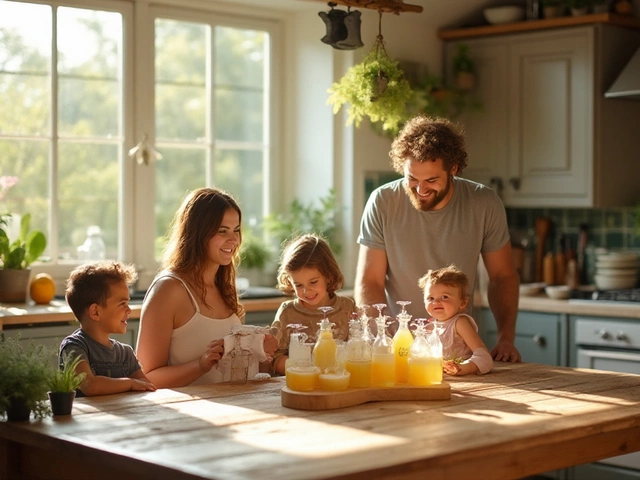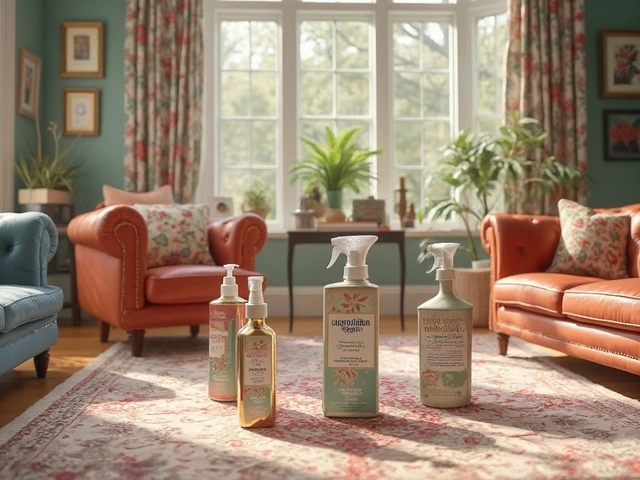It’s wild to think that something as simple as mopping a floor could actually help stop sickness from spreading. But that’s exactly what happens when you focus on environmental cleaning. It’s not just about making a place look good — it’s about creating healthier spaces for everyone who walks through the door. Some days I wonder if we all realized what our kitchens could harbor, we’d spend less time scrolling recipes and more time with a scrub brush.
What Is Environmental Cleaning?
Imagine you walk into a hospital room and it smells like pine. Tables, doorknobs, and bed rails shine. That’s not just for show — it’s environmental cleaning at work. In plain English, environmental cleaning means regular cleaning and disinfection of surfaces to reduce germs, bacteria, and nasty stuff that can make you sick. It's not just a hospital thing, either. It shows up everywhere people gather: schools, offices, restaurants, even your living room.
Here’s how it breaks down: First comes removing dust, spills, and grime with soap, water, or regular cleaners. Next up is killing what’s invisible — bacteria, viruses, mold spores — with disinfectants. The point? To make sure surfaces don’t act as silent taxis for germs. Back during the COVID pandemic, you probably saw the word 'high-touch areas' everywhere. That meant spots people touch a lot: light switches, door handles, remotes, sink taps. Cleaning these often can seriously cut down the chance someone picks up a cold, flu, or worse.
Not convinced it matters? Public Health England once ran a hospital study: when cleaners focused on wiping high-touch spots every few hours with proper disinfectants, MRSA infection rates dropped almost by half. Science backs up what every neat freak has known forever — a wipe today saves a sneeze tomorrow.
Environmental cleaning isn’t about becoming a germaphobe. It’s about breaking the chain of infection, so colds don’t sweep through your office in January and norovirus doesn’t ruin school lunch. It’s surprisingly simple but gets overlooked. Picture all the invisible stuff living on your phone or kitchen counter. Now, imagine cutting those germs by over 80% just by wiping and using disinfectant. That’s the power here.
And by the way, it isn’t all harsh chemicals. These days eco-friendly cleaning is bigger than ever. More companies are blending in natural disinfectants like hydrogen peroxide or citric acid, letting you get rid of bacteria without blasting your house with ammonia. Cleaner homes, cleaner planet. That's a win either way.
Everyday Examples of Environmental Cleaning
When you hear “environmental cleaning,” you might picture a team of masked folks fogging a hospital room in slow motion. But it happens on a much more normal level too. It’s everyday stuff — as basic as wiping down your kitchen counters with hot soapy water after dinner, or scrubbing the bathroom sink before your parents come over.
Here are some classic, relatable examples:
- Disinfecting kitchen countertops after handling raw chicken.
- Wiping down doorknobs and light switches during flu season.
- Cleaning shared keyboards and phones in an office.
- Mopping bathroom floors in schools with a hospital-grade disinfectant.
- Emptying trash bins before they overflow and attract bugs.
Restaurants, for instance, run two routines: they clean spills or crumbs to avoid customer complaints, but every night, staff sanitize every surface with food-safe cleaners. And don’t get me started on hotels — bedding washed on high heat, bathroom fixtures wiped with disinfectant, and carpets vacuumed daily. This isn’t about being fastidious, it’s required by health codes for a good reason. Even gyms have strict protocols: every treadmill, dumbbell, and yoga mat gets a spray-down to keep bacteria (and athlete’s foot) from jumping between people.
Inside your home, you might focus on the bathroom: scrubbing out the toilet bowl, wiping down the faucet, and changing out towels. Or maybe it’s your car’s steering wheel — one of the dirtiest spots most people forget to clean.
Environmental cleaning even stretches outside. Think about public playgrounds. Local councils clean slides, swings, and benches regularly to keep germs and gum under control. School janitors? They’re often the unsung heroes, hitting high-touch surfaces before the halls fill with kids, and again after everyone goes home. Without that work, classrooms would turn into cold and stomach bug hotspots.
The thread through all of this is routine. Sure, sometimes, there’s a deep clean after a contagious outbreak, but daily habits add up to healthier environments. Case in point: offices that switched to daily desk and keyboard cleaning saw about 30% fewer sick days in 2023, according to a study published in "Workplace Hygiene Quarterly." If a wipe-down can spare you a week on the sofa buried under tissues, why skip it?

Key Steps to Effective Environmental Cleaning
It doesn’t have to be rocket science, but there is a smart way to do it. Here’s what actually makes environmental cleaning work — whether you’re at home, in school, or working in a hospital.
- Start with Cleaning First: Don’t just spray and go. Remove crumbs, dust, and visible dirt first. Disinfectants work way better when surfaces aren’t caked in yesterday’s sandwich.
- Choose the Right Disinfectant: Check that bottle! Some cleaners only lift dirt; others kill viruses or bacteria. Hospitals use products marked as EPA-registered or “hospital grade.” At home, look for disinfectants that kill at least 99.9% of germs, but go easy with bleach unless absolutely needed.
- Target the Hot Spots: Door handles, light switches, elevator buttons, keyboards. These see the most hands and the most germs. Focus your efforts here for the biggest impact.
- Pay Attention to Dwell Time: Most disinfectants need 2-5 minutes on the surface to actually kill germs. If you spray and wipe immediately, you’re probably just moving stuff around. Let the surface air-dry or follow the instructions on your cleaner.
- Set a Schedule: Consistency is everything. Set reminders for high-traffic areas (once daily in homes, every few hours in busy places). Track what gets cleaned — a lot of workplaces use simple checklists or cleaning logs.
- Use Color-Coded Cloths: Hospitals and savvy offices use different color cloths for bathrooms versus kitchens, for example. That stops you from wiping toilet bacteria all over your desk. Don’t mix it up!
- Don’t Forget Ventilation: Good airflow helps stop bacteria and mold from growing in damp spots. Crack windows or use exhaust fans when cleaning, especially when using strong products.
Stick to these basics and you’ve already cut a huge chunk of disease risk. But if you want to go the extra mile, learn about what “contact time” means (hint: it’s how long disinfectant needs to sit), and double-check that surfaces are dry before you put things back. Bacteria love damp places.
Here’s a quick reference table for what, how often, and with what to clean:
| Surface/Area | Frequency | Recommended Product |
|---|---|---|
| Kitchen counters | Daily | Antibacterial spray |
| Doorknobs | Daily (more if sick) | Disinfecting wipes |
| Bathroom sink | Daily | Mild bleach or vinegar mix |
| TV remotes | 2-3 times weekly | Alcohol-based wipe |
| Children’s toys | Weekly | Soap & water, then disinfectant |
Stick this on your fridge or office wall if reminders help. And yes, replace those sponges every week (they’re germ havens after just 7 days).
Eco-Friendly Environmental Cleaning: Better for You, Better for the Planet
There’s a reason more people talk about “eco-friendly cleaning” these days. A lot of older cleaning products are so intense they smell like a chemistry lab and can trigger allergies or worsen asthma. That’s where the green cleaning wave comes in. Using natural, biodegradable products doesn’t just help the earth — it’s definitely better for your lungs and skin, too.
If you peek under my own sink, you’ll see plenty of old-school stuff, but I’ve swapped a lot for plant-based cleaners. Brands like Seventh Generation and Ecover use ingredients like citric acid, salt, or even baking soda (the same one you use for cookies!). These can tackle most bacteria and fungi, without washing harsh chemicals down the drain. When my wife Marina made the switch, I noticed we both sneezed less during allergy season, and even our dog seemed happier.
Vinegar and baking soda are classic for a reason: vinegar works against E. coli and salmonella in the kitchen, while baking soda scrubs out odors in fridges and trash cans. Tea tree or lavender oil? They’re not just pretty smells — both have natural antibacterial powers proven in studies from the University of Western Australia. Don’t worry, you won’t end up with your house smelling like a salad bar — most natural cleaners blend in mild scents to keep things fresh but not overpowering.
Reusable cleaning cloths also cut waste way down. Drop paper towels for washable bamboo or cotton rags. A 2023 survey from EcoClean Labs found that one reusable cloth saved over 35 rolls of paper towels a year for the average household. That’s a mini forest right there. Want to go next-level? Check out refill stations for eco-cleaning brands, where you top off bottles instead of buying new plastic every month. Saves money and mountains of plastic trash.
And about those wet wipes — try compostable or biodegradable ones, especially for wiping hands or baby toys. Just make sure you never flush them, no matter how “bio” they claim to be. The local water system will thank you.
Switching even half your cleaning routine to eco-friendly options makes a difference. Less harm to rivers, safer for pets, and, bonus, you rarely end up with weird chemical burns on your hands. But don’t worry if you need something heavy duty (like a bleach solution) after a nasty stomach bug. Use what makes sense, and remember — eco doesn’t have to mean less effective, just less harsh.

Why Environmental Cleaning Really Matters
Here’s the kicker: a single doorknob touched by sick hands can spread germs to up to 60% of people in an office, according to a study by the University of Arizona. That’s one reason environmental cleaning matters so much more than just neatness.
Hospitals get it because a missed spot can literally be life or death — but the same principles work everywhere. Classrooms that wiped down desks daily during 2022 flu season saw absentee rates drop by 15%. In workplaces, companies that doubled their cleaning schedule saw fewer outbreaks of colds and viruses. Food businesses have rigid cleaning schedules, sometimes every half hour, to stop customers from picking up food poisoning — and avoid massive legal bills.
But even at home, the stakes are real. I can’t count how many times someone visited my place with a “just a mild cough,” and days later the whole family’s sniffling. Regular cleaning, especially of shared and high-touch items, slices that risk right down. If you or anyone in your house has allergies, a strong daily cleaning routine reduces pollen, dust mites, and other triggers.
Mental health gets a boost too. Studies out of Princeton prove that cluttered or dirty spaces increase anxiety and distract you while working or relaxing. Regular cleaning doesn’t just fight germs — it clears your head, too.
And the big picture? Cleaning sustainably means you use fewer toxic chemicals, waste less plastic, and pollute less. When cities, schools, and businesses get this right, it adds up to cleaner water supplies and less chemical residue in rivers, parks, and farms. That’s good news if you’ve got kids, pets, or anyone you love breathing the same air.
So if you catch yourself thinking “I’ll wipe that counter later,” remember: environmental cleaning isn’t just about a shiny space. It’s about your health, comfort, and the next person who comes through the door — today and years from now.
